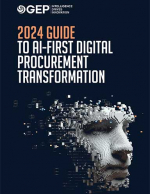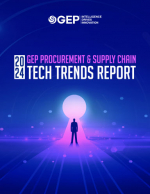How a Global CPG Company Saved 20% on Packaging Costs By Partnering With GEP
A U.S.-based consumer packaged goods company sought to better manage its packaging spend, strengthen its forecasting capabilities and enhance inventory management in the category. It partnered with GEP and streamlined the direct category, reducing packaging costs by 20%.
A leading consumer packaged goods (CPG) company based in the United States, boasting a diverse portfolio of trusted household brands and an annual revenue of over $5 billion, had limited visibility into its costs for packaging - it lacked a detailed, granular cost breakdown. With insufficient understanding of and visibility into the needs and challenges of this direct spend category, the company faced difficulty getting accurate forecasts, especially amid turbulent market conditions and supply problems.
A lack of collaboration among various internal stakeholders further impacted forecasting and decisionmaking. For instance, a change in packaging graphics was not communicated in a timely manner to the procurement team, resulting in a negative effect down the line because of a delay in the purchase of the required volume of materials and insufficient stock.
To add to the problem, increasing commodity prices heightened cost pressures, so the operations team was resistant to holding extra inventory as buffer. Collectively, this situation increased the risk of production issues that could in turn affect the company’s ability to fulfill orders and meet customer demand.
The Fortune 1000 company also wanted to explore the use of different printing technologies and align its use of technology to volume requirements to boost efficiency. The corporation decided to seek external procurement expertise to streamline its packaging processes, improve stakeholder collaboration, save costs and minimize the risk of product delays.
After a rigorous selection process, the American CPG company chose to partner with GEP for its experience in the packaging category (along with almost every one of its sub-categories), which spans several billion dollars in managed spend in major regions across the world. Download the case study to see the results of improved visibility and forecasting capabilities!
What’s Related




Favorites





